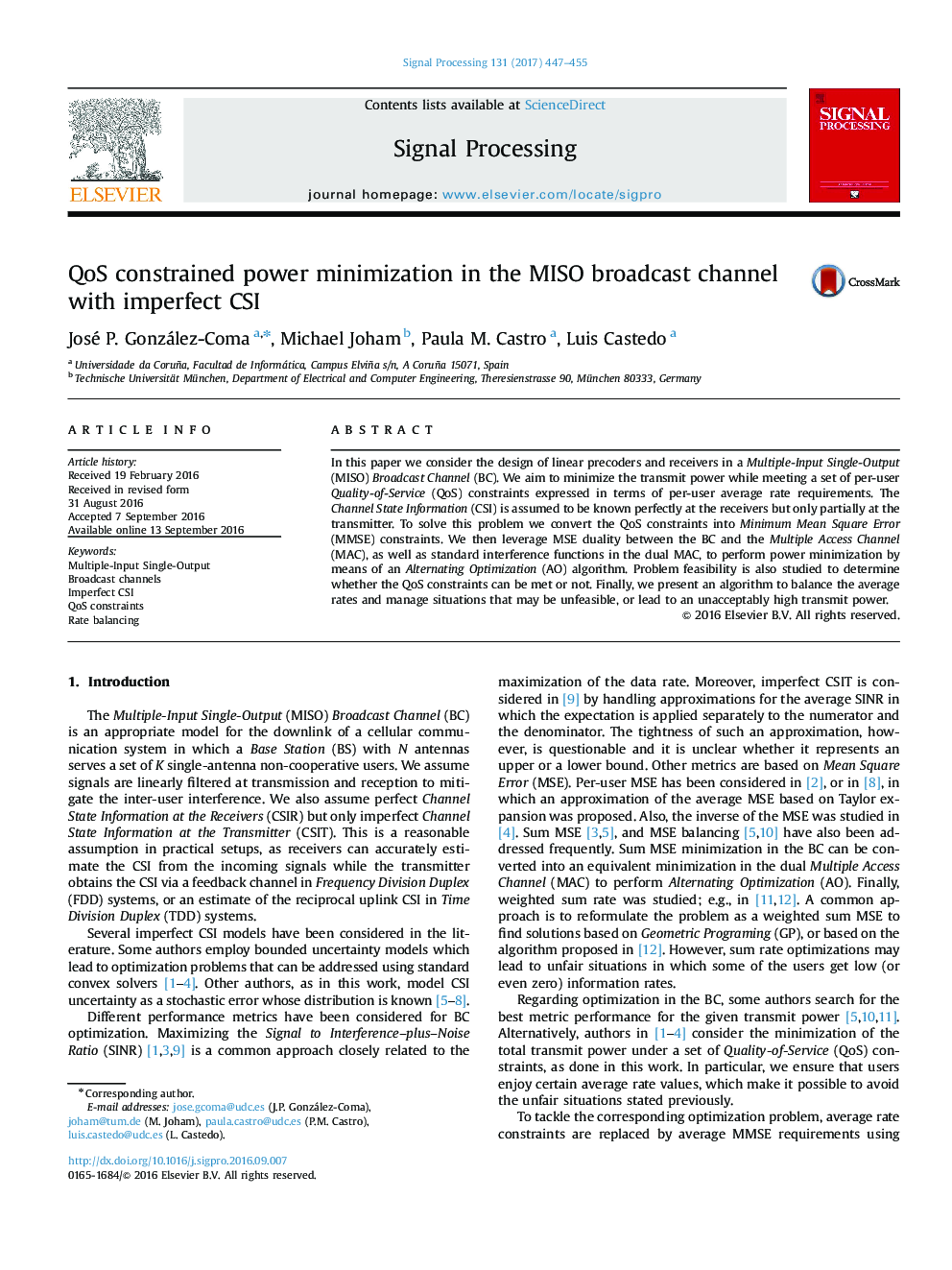| Article ID | Journal | Published Year | Pages | File Type |
|---|---|---|---|---|
| 6958087 | Signal Processing | 2017 | 9 Pages |
Abstract
In this paper we consider the design of linear precoders and receivers in a Multiple-Input Single-Output (MISO) Broadcast Channel (BC). We aim to minimize the transmit power while meeting a set of per-user Quality-of-Service (QoS) constraints expressed in terms of per-user average rate requirements. The Channel State Information (CSI) is assumed to be known perfectly at the receivers but only partially at the transmitter. To solve this problem we convert the QoS constraints into Minimum Mean Square Error (MMSE) constraints. We then leverage MSE duality between the BC and the Multiple Access Channel (MAC), as well as standard interference functions in the dual MAC, to perform power minimization by means of an Alternating Optimization (AO) algorithm. Problem feasibility is also studied to determine whether the QoS constraints can be met or not. Finally, we present an algorithm to balance the average rates and manage situations that may be unfeasible, or lead to an unacceptably high transmit power.
Related Topics
Physical Sciences and Engineering
Computer Science
Signal Processing
Authors
José P. González-Coma, Michael Joham, Paula M. Castro, Luis Castedo,
